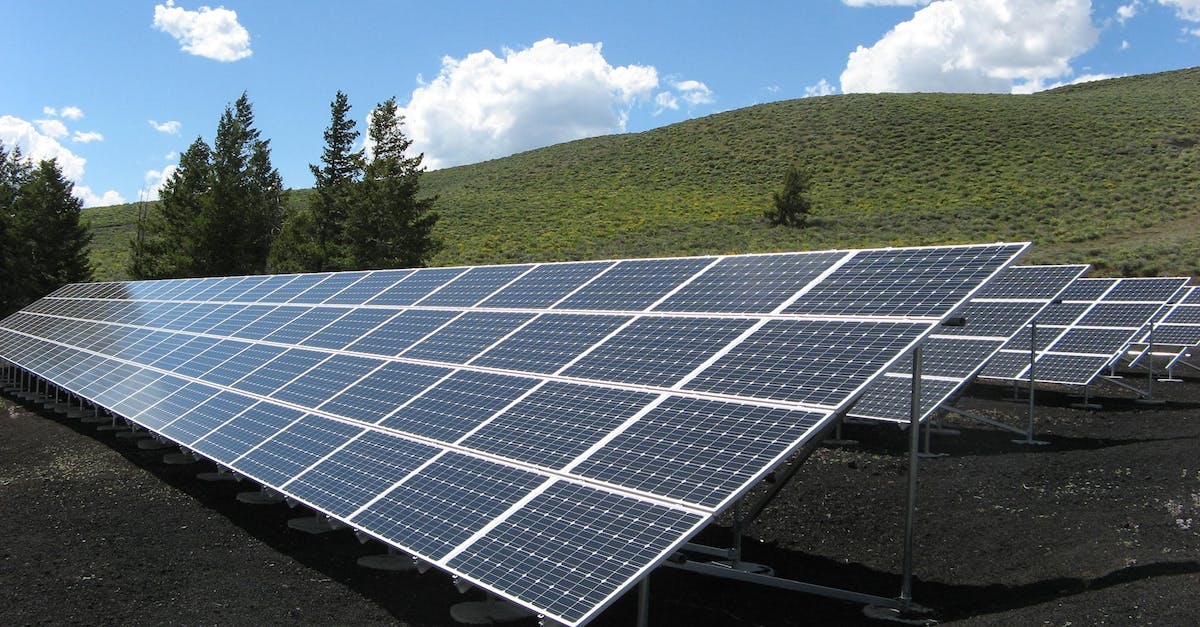In a world feeling the increasing pressures of climate change and numerous environmental challenges, embracing an eco-friendly lifestyle has never been more critical.
Understanding Eco-Friendly Living assists in deciphering what it means to live sustainably, why it is important, and how the switch invigorates your health and boosts overall well-being. As you navigate through the specifics of such living, including eco-friendly homes and gardens, we dive into the small changes that can drastically reduce your environmental footprint.
Delve into the realm of sustainable fashion and beauty, where we shed light on the negative effects of fast fashion and the benefits of embracing organic, ethical brands. And lastly, eco-friendly transportation and travel, where the spotlight lands on the significance of public transport, biking, electric vehicles, and eco-tourism.
Embarking on this journey of knowledge uncovers the steps to sustain a lifestyle that protects and cherishes our planet.
Understanding Eco-Friendly Living
It’s More Than Just a Trend: The True Meaning of Living an Eco-Friendly Lifestyle and Why It Matters
We’ve all seen it. The phrases “eco-friendly” and “environmentally conscious” seem to be everywhere these days. But what does it truly mean to live an eco-friendly lifestyle, and why does it matter? Strap up, eco-champion! It’s time for a deep dive into the world of sustainable living.
First things first. Adopting an eco-friendly lifestyle means trying to reduce the harm inflicted on our planet. It’s about embracing a way of life that is both sustainable and considerate, reducing the impact on the environment through minimizing waste, reducing energy consumption, and making responsible purchasing decisions. It’s not just about recycling. It’s about every choice, every day, affecting the world in a positive way.
But why does it matter, really? The short answer, reader, is that the Earth isn’t an infinite resource. The bad news is that our daily actions often impact the environment more than we realize. The good news? That can have a positive impact if we make it so!
Here’s the thing: living an eco-friendly lifestyle isn’t all about grand actions and giant leaps. Instead, it’s about small, thoughtful steps. It’s about turning off lights when not needed, reducing water wastage, using public transport to reduce carbon emissions, or choosing locally produced & organic products. It’s minimizing our trash and plastic use, recycling more, and composting organic waste. A thousand little choices come together to make a huge difference.
-

Fashionably Green and On-The-Go
£16.50 Select options This product has multiple variants. The options may be chosen on the product page -

Reusable and Ready Eco-Friendly Tote Bag
£16.50 Add to cart
This lifestyle does wonders for the pocketbook, too. By using less energy and water, embracing secondhand and local goods, and incorporating eco-friendly alternatives, you might find yourself saving a surprising amount of cash.
Does it sound like hard work? Maybe. But remember, reader, an eco-friendly lifestyle doesn’t have to be an all-or-nothing venture. Every small change contributes to the greater good and creates a ripple effect.
Let’s also address another crucial aspect: educating ourselves. Understanding the “why” behind our actions can strengthen our commitment to sustainability. It’s easier to put effort into something when we understand the reasons for doing it. Resources abound for every imaginable facet of this topic, from the impacts of fast fashion to the benefits of composting.
Last but definitely not least, an eco-friendly lifestyle is about community. When we adopt more sustainable habits, we are not only protecting the environment; we are also inspiring others to do the same. And as we all know, there’s no better form of activism than leading by example.
In short, leading an eco-friendly lifestyle means living in a way that is not only better for the environment but also deeply satisfying on a personal level. It’s about conscious choices, meaningful actions, and sharing a mentality that respects and values the world around us. It’s about ensuring that the beautiful planet we call home remains livable for us and for every generation yet to come.
At the end of the day, doesn’t that seem like a worthwhile effort? Welcome to the green side, friends. This way of life is more than just a hobby; it’s a commitment, an adventure, and a promise for a greener tomorrow. Let’s roll up our sleeves and create a sustainable future together!

Eco-friendly Home and Gardens
Redirecting Home and Garden: Your Starting Line towards an Eco-Friendly Lifestyle
Undoubtedly, every corner of our habitations has the potential to become a stepping stone towards sustainability. The path leading to greener living begins right at our doorsteps, within our homes, and extends into the green expanses of our yards and gardens. Tapping into this potential not only contributes to the preservation of our beloved planet but also helps foster a close-knit community spirit revolving around shared green values.
Consider this: Integrating eco-friendly elements into our homes doesn’t have to be a Herculean task. We can start with the small, simple changes in our day-to-day life. Switching to energy-saving appliances, minimizing water use, and improving energy efficiency by insulating homes are some accessible ways to begin this journey. Channels for reducing energy consumption are numerous, whether it’s opting for LED lights, installing programmable thermostats, or choosing Energy Star appliances.
Going one step further, we can look at harnessing the power of renewable energy sources, like installing solar panels. These are a beacon of sustainable living and can significantly ease the burden on our utility bills. Who wouldn’t relish the dual benefit of saving money while saving the planet?
Moving from our homes to the garden, the possibilities for sustainable practices expand exponentially. Composting transforms kitchen waste into a nutrient-rich soil conditioner, promoting the growth of healthy plants while reducing landfill waste. Rainwater harvesting provides an eco-friendly solution for watering the garden, saving precious water resources.
Gardening itself can be molded into a more sustainable activity. Choosing native plants over exotic ones reduces water use and supports local ecosystems. Organic gardening steers clear of harmful pesticides, leading to improved soil quality and, consequently, healthier produce.
Through adopting these sustainable practices in home and gardening, we’re setting valuable examples for our neighborhood and beyond, serving as educators of a crucial need of our times. We’re also nurturing an intimate connection with Mother Nature, obtaining peace and contentment in return.
As messages of sustainability continue to echo louder, let’s embrace the challenge of turning our homes and gardens into sanctuaries of eco-friendly living. By doing so, we’re stepping up to take care of our planet and paving the way for future generations to follow suit. As guardians of the Earth today, let’s fuel our collective strength and wisdom to craft a beautiful, sustainable future for all. Dear reader, the journey to embrace an eco-friendly lifestyle starts with you. It starts now. It starts right here, in our homes and gardens.

Sustainable Fashion and Beauty
While understanding the backbone of an eco-friendly lifestyle and its significance at home and in community settings is a crucial first step, turning the lens towards fashion and beauty can add further momentum to this sustainability journey.
The world of fashion and beauty is often overlooked when discussing sustainability, yet they have a pervasive presence in our daily lives. Each piece of clothing we wear, every beauty product we use, has a narrative that traces back to its production and disposal. Recognizing the influence of sustainable fashion and beauty is integral to fostering an eco-friendly lifestyle, broadening our capacity to minimize environmental harm, encouraging community participation, and stimulating personal fulfillment.
A chosen wardrobe reflects a part of us. So, opting for sustainable fashion means voting for an industry that respects and supports both people and the planet. Often, this means investing in high-quality garments that last longer, saving resources and money in the long run. It also means supporting brands that treat their workers fairly, ensuring that one’s choices positively impact a global scale. Certainly, thrifting and clothes swapping are great ways to extend the lifecycle of clothes without compromising style.
Like fashion, the beauty sector has a significant environmental footprint, from sourcing raw ingredients to packaging and product disposal. Shifting to sustainable beauty products enhances our step towards a green lifestyle. Go for brands that are transparent about ingredients and sustainable sourcing. Prioritize packaging: look for recyclable, refillable, and compostable options. This allows millions of beauty products to be diverted from landfills, paving the way towards a zero-waste lifestyle.
At the same time, creating DIY beauty remedies at home is a fun and fulfilling experiment to control what materials come into play, eliminating harmful substances and reducing packaging waste. It sparks creativity while committing to earth-friendly habits.
Apart from environmentally friendly practices, sustainable fashion and beauty spur community connections. Clothing swaps or DIY beauty product workshops are great platforms to inspire others in your circle to join the sustainability movement. These shared experiences foster camaraderie while amplifying the impact on sustainable living.
Simply put, sustainability is more than a trend- it’s a lifestyle that spans all aspects of our lives. Mindful fashion and beauty choices bridge the gap between style and sustainability and reflect our love for the planet and its people, yielding immense personal satisfaction. So, let’s align our personal style with our values, making sure the footprint we leave behind us is one that future generations will be thankful for.
So, whether you’re an experienced fashionista, an ardent skincare lover, or a newbie in the world of sustainable living, it’s time we embark on an illuminating journey of sustainable fashion and beauty – another valuable stride towards achieving an eco-friendly lifestyle.

Eco-friendly Transportation and Travel
Moving forward to the core premise of this article, let’s explore the fascinating relationship between transportation, travel, and sustainability.
Transportation poses a crucial challenge for most enthusiasts involved in shaping sustainable lifestyles. Climate crises are being magnified by excessive carbon emissions, primarily from our favorite planes, cars, and cruises. Must we sacrifice our wanderlust in favor of Mother Earth? Luckily, the answer to that is a hearty ‘No’ – eco-friendly transportation and travel are not just feasible, they’re thriving!
One ultra-modern means of sustainable travel is electric vehicles (EVs). With zero tailpipe emissions, EVs are a brilliant solution for reducing our carbon footprint. Moreover, the advancement of electric car technology has made these vehicles a perfect blend of performance and sustainability. High-speed charging, longer battery life, and decreasing costs are paving the way for EVs to be the best buddies for eco-enthusiasts.
If EVs seem too futuristic, let’s shift gears to something traditional – bicycles! Among the simplest yet powerful tools for sustainable commuting, cycling offers a delightful bonus – the joy of physical exercise and an intimate connection with nature while getting from point A to point B. City-based bicycle-sharing programs have also emerged in response to the demand for sustainable urban transportation.
Taking the conversation to the waters, eco-friendly boating options are gradually buoying up. Solar-powered boats are slicing through waterways, proving that even your adventures at sea can be sustainable. Rail travel, though often overlooked, is a significantly less polluting medium of transport, especially for long-distance travel.
Besides transportation, sustainable choices can even shape our tourism practices. For instance, ecotourism focuses on responsible travel to natural areas, conserving the environment, and improving the well-being of the local people. It merges exploration with respect for biodiversity and cultures.
Bigger players in the travel industry are also pitching in. Green hotels and resorts are sprouting worldwide, encouraging local subsistence and minimizing waste. Airlines, too, are slowly but steadily gearing towards biofuels to trim carbon emissions.
Moreover, digitalization has gifted us the boon of virtual tours. These can quench your thirst for world exploration without exhausting the planet’s resources! And let’s not forget the joy of local tourism – exploring and appreciating your local area can often deliver the same thrill as traveling far and wide.
Undoubtedly, everyone must play their part to make transportation and travel truly eco-friendly. This includes government regulations, efforts from the transportation and travel industries, and choices made by individuals like us.
So gear up, fellow eco-enthusiasts, to travel the world guilt-free. Step by step, pedal by pedal, let’s traverse towards a more sustainable future. Remember, every sustainable choice is a step away from the brink, closer to harmony with nature. It’s not just about the destination; it’s about how you travel that journey sustainably!

Today, protecting our planet is a shared responsibility that begins with each one of us. By understanding and integrating principles of sustainability in every aspect of our lives—our homes, our gardens, our choice of fashion, beauty products, and the way we travel—we contribute to the global efforts to reverse environmental degradation and climate change. Living an eco-friendly lifestyle is an adventure full of discovery, with opportunities to express creativity and connect with the natural world.
Ultimately, it leads to a deeper appreciation of our interdependence and shared destiny with all life on earth. So, let this journey not be one of sacrifice and deprivation but one of enrichment and celebration of the abundant beauty that life has to offer in its sustainable form. And remember, every small step taken towards eco-friendliness is a giant leap for mankind.

